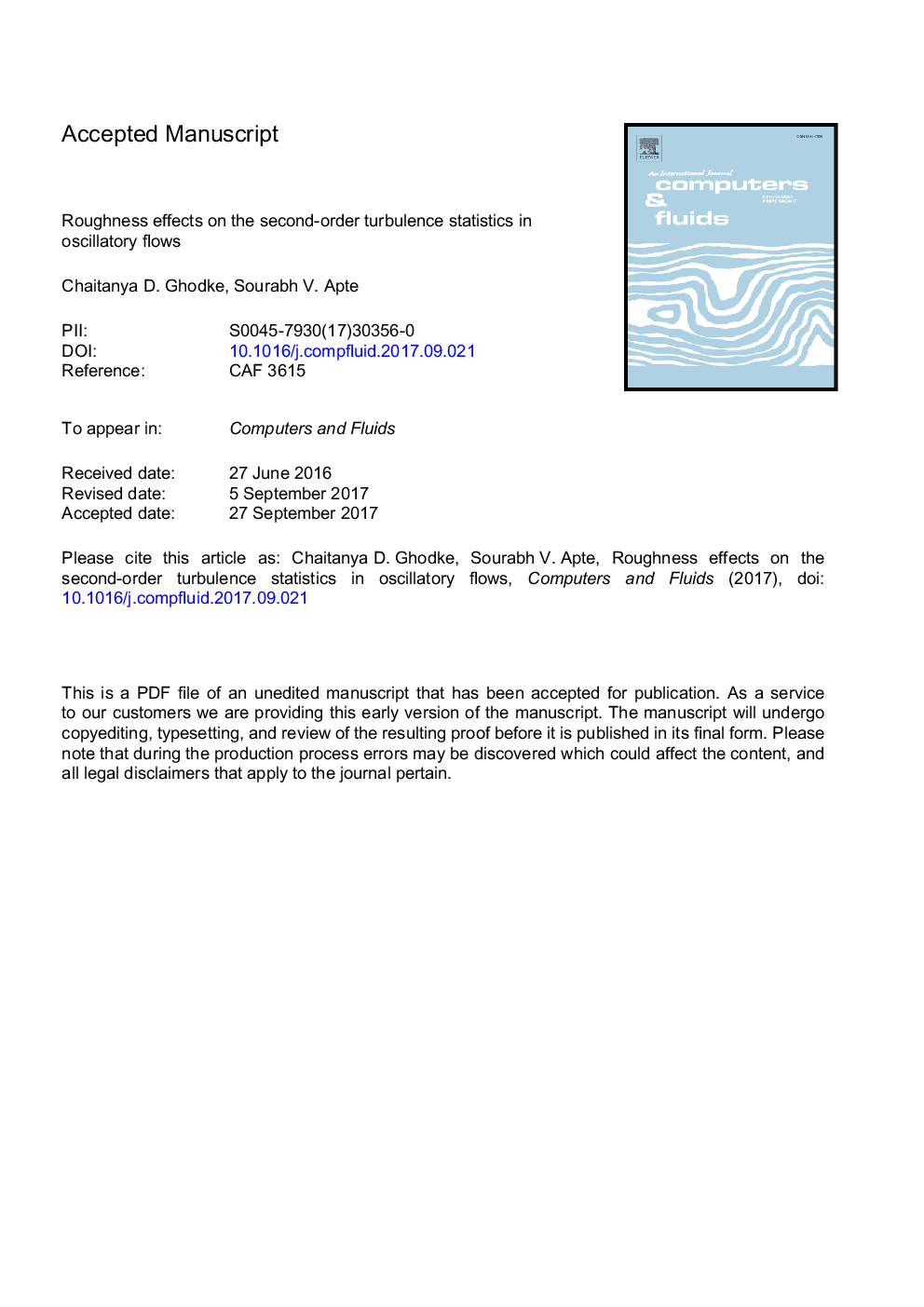| Article ID | Journal | Published Year | Pages | File Type |
|---|---|---|---|---|
| 7156491 | Computers & Fluids | 2018 | 36 Pages |
Abstract
Effects of roughness on the near-bed turbulence characteristics in oscillatory flows are studied by means of particle-resolved direct numerical simulations (DNS). Two particle sizes of diameter 375 and 125 in wall units in a very rough turbulent flow regime are studied. A double-averaging technique is employed to study the nature of the wake field, i.e., the spatial inhomogeneity at the roughness length scale. This introduced dispersive stresses along with additional production and transport terms in the double-averaged Reynolds stress budget, indicating alternate pathways of turbulent energy transfer mechanisms. While overall nature of the elementary processes responsible for energy transport in both flow cases remains identical, there are some discernible differences with regards to the near-bed turbulence structure. It is shown that the roughness modulates the near-bed turbulence, distorts and breaks the streamwise horseshoe structures, and therefore reduces the large-scale anisotropy; a result of redistribution of energy from streamwise component to other two components of the Reynolds stress and is illustrated by studying their individual budgets. In comparison to the small diameter, such effects are found to be significant in the case of large diameter particle-bed. In addition, redistribution of energy in the large diameter particle case shows reduced dependence on the flow oscillations, while for the small diameter particle it is more pronounced towards the end of an acceleration cycle.
Keywords
Related Topics
Physical Sciences and Engineering
Engineering
Computational Mechanics
Authors
Chaitanya D. Ghodke, Sourabh V. Apte,
